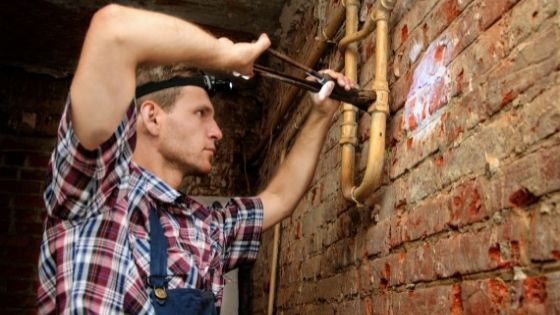Several conditions can make a basement uncomfortable, but most homeowners will agree that basement water is one of the most serious problems.
Excessive humidity in the basement, either from leaks or a rusty basement window, can render the room unusable.
A damp basement creates an ideal habitat for mold, organisms that feed on and destroy organic matter and that can cause respiratory illness and serious health problems in some people.
It’s no wonder that a wet basement makes selling a home difficult or even impossible.
Table of Contents
What You Need to Know About Basement Repair
Your foundation walls are designed to support the weight of your home and resist the moisture around it. If the foundation works, you will live in a stable and dry environment. When they crack, moisture seeps into your basement; damages valuables such as carpets, souvenirs, and furniture; It encourages mold growth and disturbs your peace of mind.
Popular Signs Your Basement Needs Repair
Sinking Floors
If you notice that your basement floor has warped or appears uneven in places, it may be due to displacement of the floor under the foundation. This problem may require the installation of piers or stainless steel rods under the basement floor to support the foundation and prevent further separation of the foundation walls.
Water Retention
If the rainy season brings problems with water retention in your basement, it’s time to contact a basement repair company to help you identify the source of the problem and protect your investment in the home. Water retention can damage furniture, floors, or basement items for later use, and can cost thousands of dollars to replace. A foundation repair contractor can take waterproofing and other measures to ensure that rainwater remains outside your home.
The Moist Smell in the Basement
Many homes have the problem of a musty smell in the basement that never seems to go away no matter how hard the owner tries. This problem can indicate small rips or tears in the foundation that allow moisture to penetrate, which can lead to mold growth in basements. Your Milwaukee basement repair company can offer a professional waterproofing service to fix this problem and make your basement more comfortable and usable.
Fundamental Basement Repair Methods
Repairing foundation cracks is not as easy as injecting the epoxy. There are different types of cracks and foundations and very specific ways to properly repair basement cracks for each of them. If you notice cracks in your basement walls and want to repair them, here are some things to know before hiring someone to repair them.

Excavation and External Drainage.
It can be effective to dig around the foundation and use a “silver lining” waterproofing treatment that involves installing new drainage lines to keep groundwater out of the house. The downside to these techniques is that they are costly, disruptive, and potentially damaging to foundations and landscape features, such as shrubs, walkways, and patios. Despite the cost, there is no guarantee that water will not enter your basement in humid weather.
Crack Repair with Carbon Fiber
Cracked walls that can only be repaired with injected material can suffer from long-term creep and fatigue, leading to failure over time due to the movement of the foundation. Stitching crack repairs into concrete with staples eliminates this slippage and improves the long-term performance of the repair material. The clips are made from high-strength carbon fibers that are encapsulated in a thermosetting resin and cure under pressure during manufacture.
Final Thoughts
Your house is your biggest investment. It is important to take the necessary steps to protect them. Don’t wait until you have a problem before doing something. Preventive measures can keep your basement dry and your pockets full. Contact our experienced team at the Indiana Foundation for more information on how to keep your basement dry this winter.


